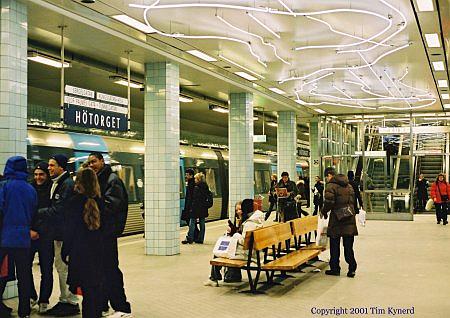
Hötorget was opened on 26 October 1952. It was originally called Kungsgatan and was the downtown terminus of what is now the western part of Tub1, which originally went from Kungsgatan to Vällingby. It wasn't until 1957 that Kungsgatan station was connected to Slussen, and the stations T-Centralen (originally called simply Centralen) and Gamla stan were opened. The name was changed to Hötorget sometime in the late 1950s.
Hötorget has been deliberately maintained with its original appearance. These pictures should make clear why I jokingly call it "the bathroom station," but I really like it. It has a very distinctive 1950s look, and the signage (in the style introduced in 1955) is wonderful.

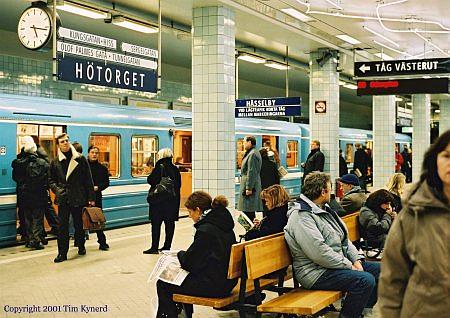
(26 February 2001)
I
selected these two photos to give an overall feel for what the
station is like. Also, the top picture shows a C20 train
stopping at Hötorget; the lower picture shows a train of older
Cx stock.
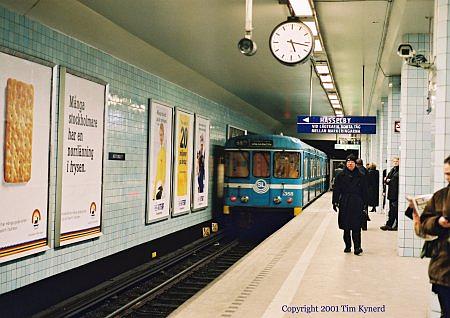
(26 February 2001)
And here's a northbound train of
Cx stock departing the station.
Now, about that signage!...
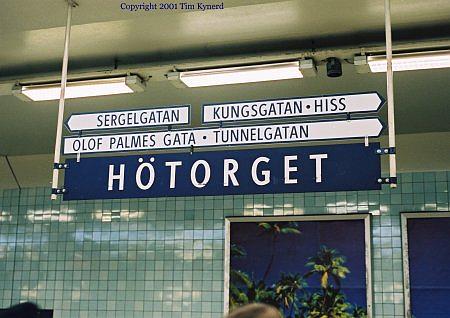
(26 February 2001)
This
sign, like all the signage at Hötorget, uses a typeface
developed especially for the tunnelbana and used beginning in 1955.
Compare the older style in use at Abrahamsberg,
the 1980s style seen at Odenplan
and the style now being introduced by Connex, seen at Fridhemsplan.
I like the 1955 typeface best of all. It was especially
designed to be easily read from a moving train, and it's distinctive
and strikes me as somehow "Swedish" in character.
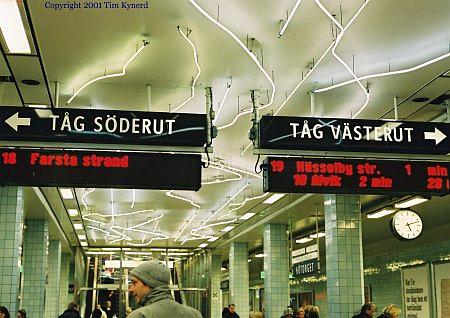
(26 February 2001)
The
two upper signs ("Southbound trains" and "Westbound
trains," respectively) are original. The lower signs, of
course, are not; they were introduced starting in the late 1980s, I
believe, on Tub2 and subsequently on Tub3; Tub1 was the last to get
them, and until about 1999, they only showed the line number and
destination of an arriving train (like the left-hand sign above), not
the line numbers, destinations and times to arrival for the next few
trains (like the sign on the right).
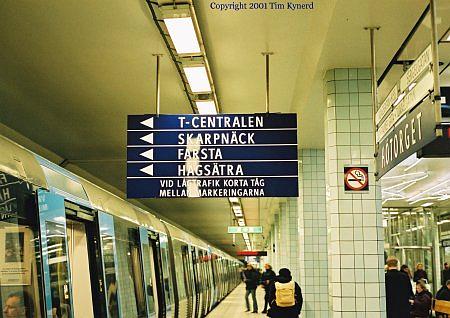
(26 February 2001)
This sign, I think, is
attractive and functional. In addition to telling you which
destinations are served from this platform face, it informs you that
off-peak, short trains stop between the markings on the platform.